Summary of Climate Disasters on the planet from July 10 to July 16, 2024
This week, the Earth has experienced a series of disasters that have left their traces worldwide. There were so many catastrophes that we decided to focus only on the most serious events that occurred in Europe from July 10 to 16. You will also learn what can help humanity survive the impending climate chaos.
Storms and Tornadoes
The strongest storms since July 11, 2024 hit the European countries.
Thunderstorms, downpours, strong winds, hail and even tornadoes raged for several days.
In Slovakia, due to the powerful storm, one of the country's largest open air music festivals, Pohoda, held in Trencin Airport, was disrupted and then canceled.
On July 12, strong winds destroyed the stage structures. Several hundred people happened to be around at that time, and rescuers had to search for victims with service dogs and thermal imagers. Emergency services reported that 29 people had been injured as of July 14.

Wind-damaged stage at the Pohoda festival, Slovakia
Food and drink stalls were also damaged.
In western Slovakia, the storm left 135,000 households without electricity. In the south of the country, railway lines were damaged. International trains to Budapest and Prague were rerouted.
In Germany, on July 12, almost a third of the country was severely hit by the storm. The federal states of Bavaria, Baden-Württemberg, North Rhine-Westphalia, Lower Saxony and Saxony suffered extensive damage.
In the regions of Upper Bavaria and Swabia, basements and streets were flooded, and fallen trees hampered traffic flow.
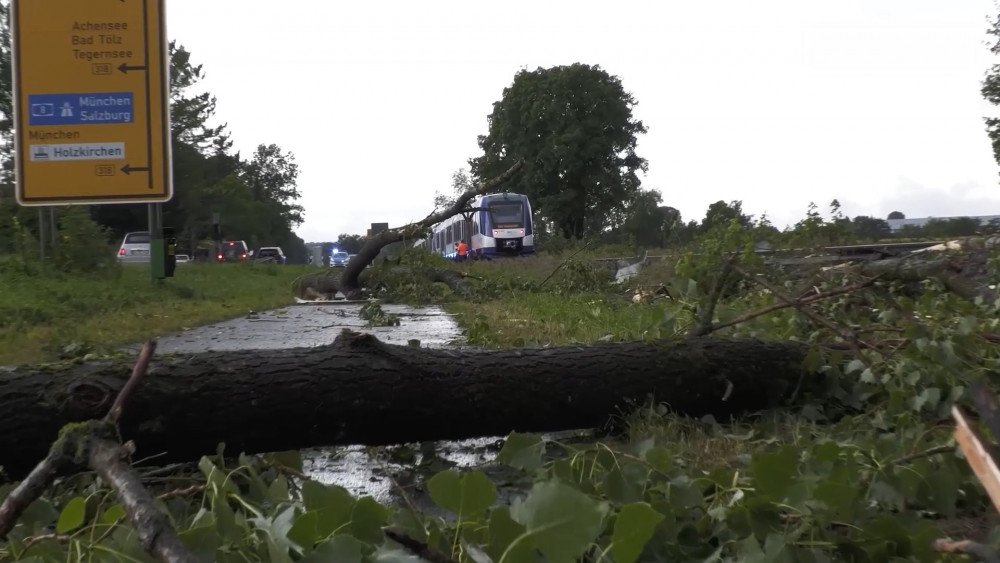
Fallen trees hampered train traffic in the federal state of Bavaria, Germany
In the city of Calw, Baden-Württemberg, hail damaged house roofs, and a fallen tree knocked down a child.
In the Lake Constance area, Upper Swabia region, several houses were damaged by lightning strikes. In the city of Telgte, North Rhine-Westphalia, a tornado-like formation caused significant damage to an industrial area.
In Nordhorn, Lower Saxony, heavy rains flooded a local clinic, forcing the emergency department to close urgently. A nursing home in southern Lower Saxony was damaged by winds.
On the same day in Austria, the UBIMET Meteorological Service recorded 190,000 lightning strikes.
On the lakes of the federal state of Carinthia, emergency services had to rescue swimmers and surfers who could not reach the shore due to strong waves.
In Tyrol federal state, some roads were closed due to landslides.
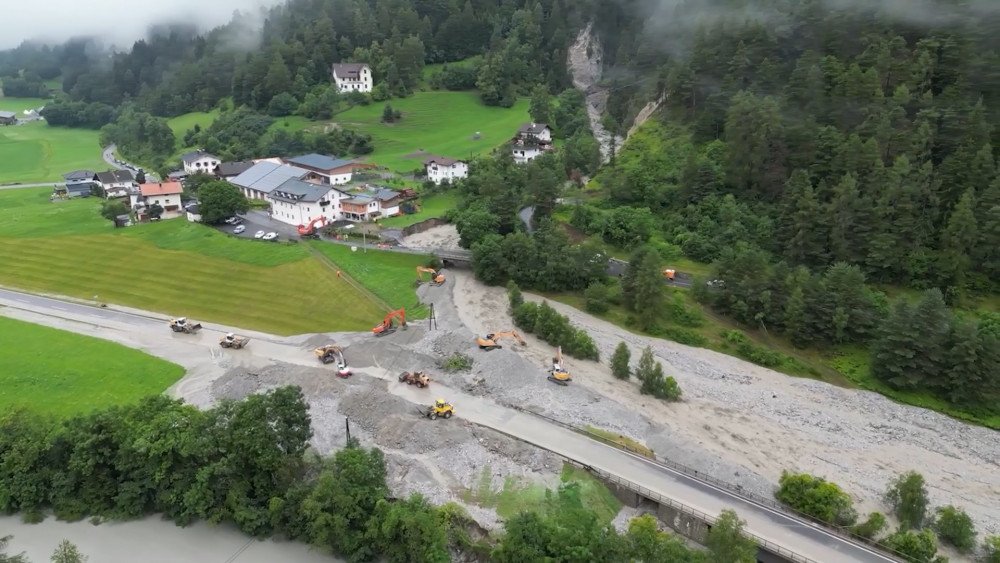
Road services clear roads after landslides in Tyrol, Austria
At Vienna Airport, about 40 flights were canceled due to weather conditions.
The federal state of Vorarlberg, located in the Rhine Valley, has suffered extreme rains: 30 liters of water per square meter fell in just a few minutes, and hail devastated more than 5,000 hectares (12,355 acres) of land. The Austrian insurance company estimated the damage at approximately 1.2 million euros.
In Switzerland, in the canton of Ticino, strong wind gusts of up to 106 km/h were observed. In the municipality of Cadenazzo, about 50 mm (1.97”) of rain fell in 20 minutes. In the commune of Riva San Vitale, boat docks were destroyed. In the town of Camorino, the storm and hail damaged greenhouses and devastated fields.
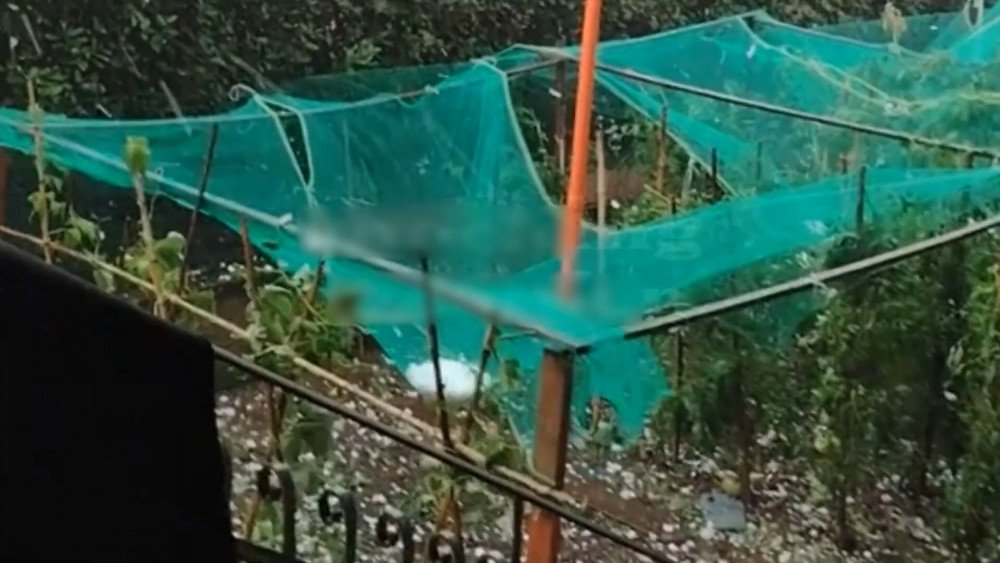
Storm and hail damaged agriculture in Camorino, Switzerland
On July 13, destructive storms hit Slovenia. The municipalities of Slovenska Bistrica and Oplotnica were heavily affected.
According to the Slovenska Bistrica Civil Defense Headquarters, huge hailstones damaged at least 350 buildings, many vehicles, and solar power units.
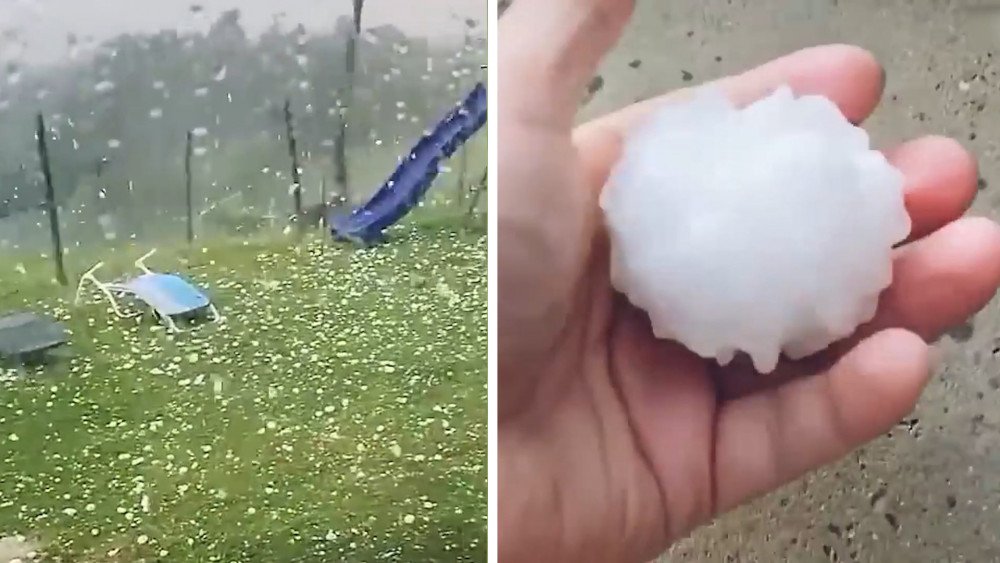
Huge hailstones in Slovenia
Residents of Belarus were also affected by severe storms.
On July 13 and 14, Grodno, Minsk, Gomel and Mogilev regions, as well as the city of Minsk, were hit by the storm.
According to the Ministry of Emergency Situations of Belarus, 6 people were killed, among them 2 children; and 15 people were injured.
Belhydromet declared the highest, red level of danger.
According to eyewitnesses from different regions, the storms raged for only a few minutes, but despite that, the aftermath was catastrophic.
Winds of up to
30 m/s (67 mph)
broke huge trees like matchsticks and uprooted them. More than 2,000 hectares (4,942 acres) of forest were downed.
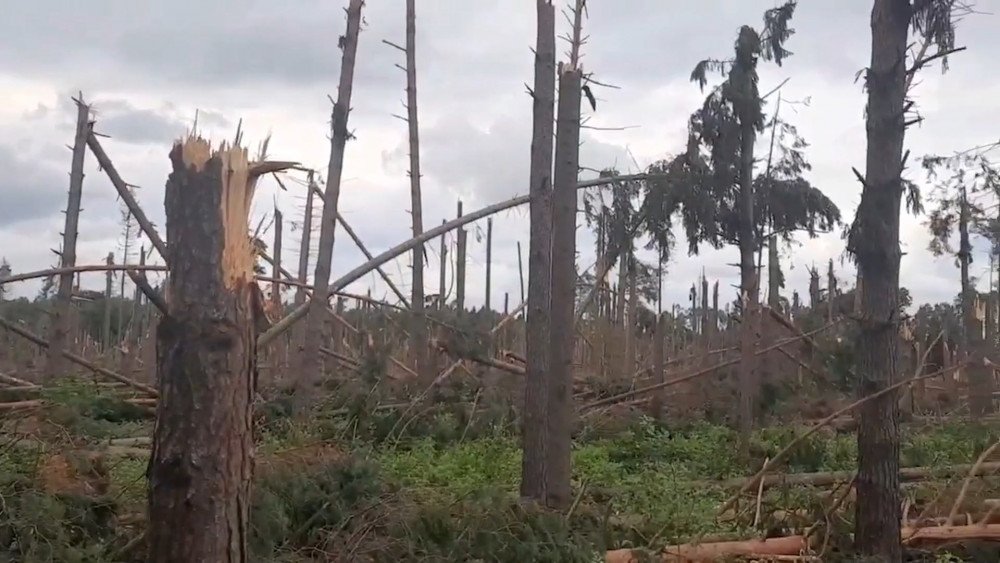
Strong wind broke trees like matchsticks, Belarus
Fallen trees resulted in collapsed power lines and damaged poles. According to the Ministry of Energy, 2,000 settlements in the country experienced power outage.
By the morning of July 15, 1,200 of them were still without electricity.
The disaster damaged many houses and buildings. Long-distance trains were delayed for hours, and commuter trains were canceled.
In the Brest region, large hail fell. Some hailstones reached a size of 7 cm (2.76”).
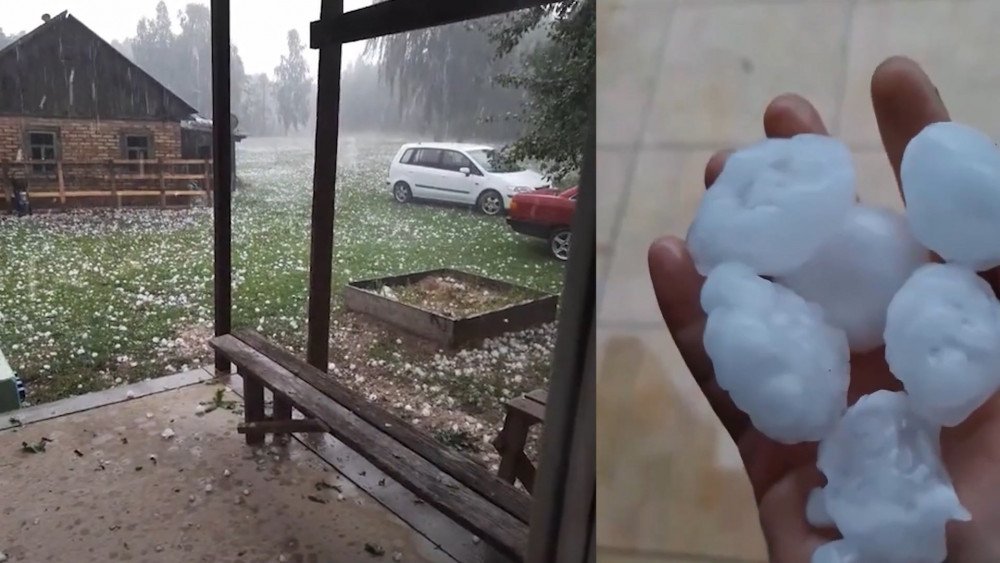
Large hail fell in the Brest region, Belarus
The storm hit a children's summer camp near the town of Rechitsa during an outdoor event. The weather changed instantaneously, bringing a ‘wall’ of dense rain.
Due to the falling trees, one child died and six other children were injured.
On July 13, several tornadoes destroyed villages in northern Lithuania.
Residents of Šiauliai County are still struggling to recover from the horror they experienced. A woman and her children barely managed to hide in a gazebo, as a tornado in the village of Meškiai destroyed their home in seconds. They suffered minor injuries from broken glass and furniture hurled by the whirlwind.
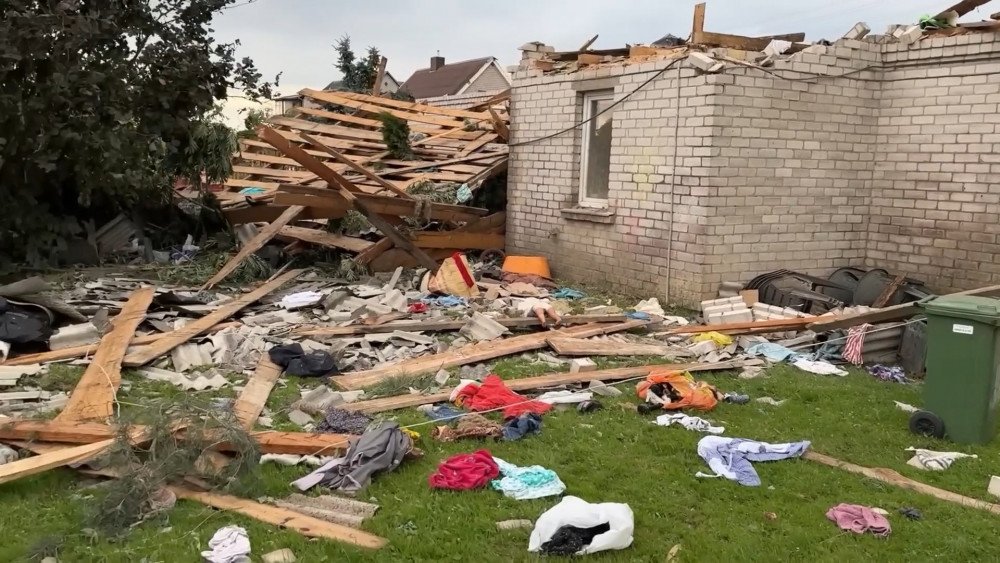
Destructive aftermath of the tornado in Šiauliai County, Lithuania
Meteorologist Gytis Valaika stated that this tornado was one of the most powerful in Lithuania's history. Preliminary estimates indicate that its wind speed reached 60–70 m/s (134–157 mph), which corresponds to category F2.
On the same day in neighboring Latvia, near the city of Olaine, a tornado swept over a solar panel park, destroying it and lifting debris high into the air.
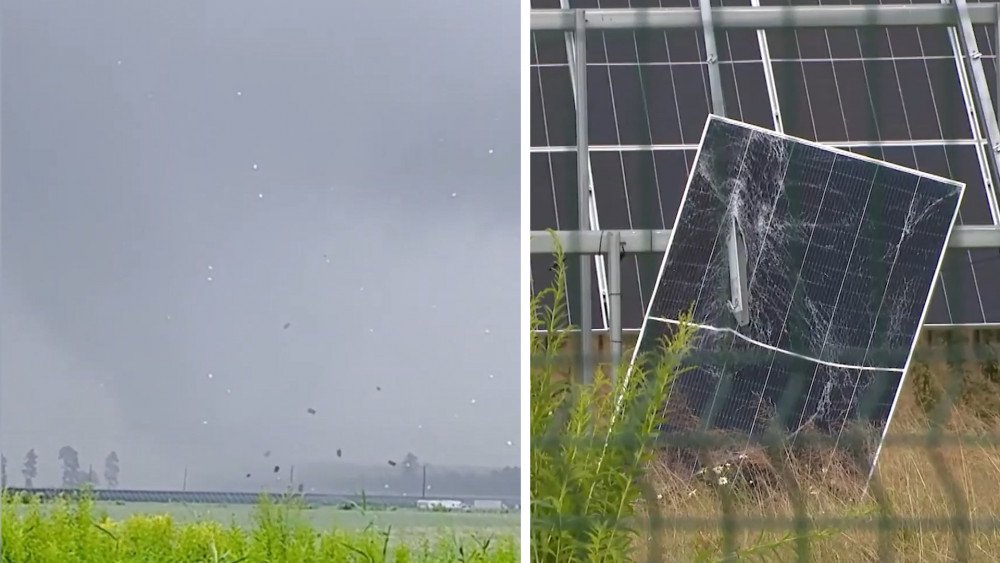
Tornado swept over a solar panel park near Olaine, Latvia
A day earlier, on July 12, a thunderstorm with hail and torrential rain hit the Bauska region; wind gusts reached 31 m/s (69 mph).
Strong winds tore off the roof of the Bauska stadium and threw it onto nearby buildings.
According to Sadales tīkls, about 8,800 people in the central part of the country suffered a power outage.
Extreme Heat and Fires
Extreme heat has engulfed Eastern and Southeastern Europe. Hundreds of records have been broken in Ukraine, Moldova, Russia, Belarus, Hungary, and the Balkan countries. Most countries declared a ‘red’ danger level due to high temperatures.
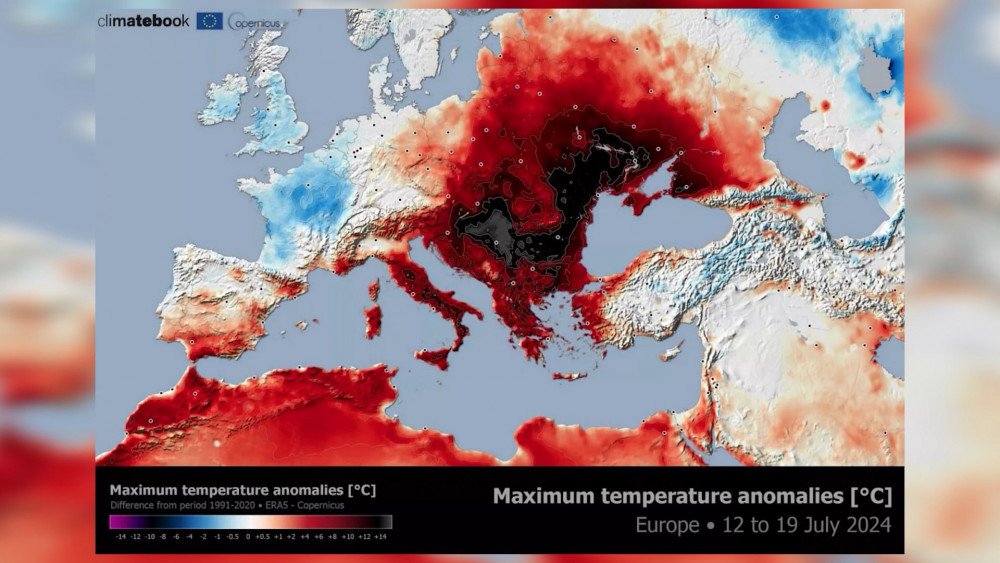
The map shows temperature anomalies in Europe from July 12 to 19, 2024
Unbearable heat settled in Ukraine. Thermometers reached 40–41°C (104–106°F), approaching the absolute records in the country’s history. On July 11, a record high of 40.5°C (105°F) was recorded in Mykolaiv — the highest temperature ever observed in the region. The record heat arrived a month earlier than usual (the highest temperatures in Ukraine typically occur in early August), with average daily temperatures 6–10°C (43–50°F) above normal.
In cities, the heat was felt even more acute: people shared photos of thermometers reaching +50°C (122°F) and above.
The heat caused problems for drivers: in cars parked in the sun, the temperature reached +75°C (167°F). Dashboards inside began to melt, and some people fainted while driving.

The anomalous heat caused a car’s dashboard to melt, Ukraine
Hungarian authorities issued a heat warning for the entire country. Air temperatures exceeded the average values of recent years by almost 10°C (50°F).
In Serbia, people actively used air conditioners, making electricity consumption as high as in winter during severe cold spells.
In southern Romania, in some localities like Calarasi in Dolj County, cooling the air in the house has become a luxury due to frequent power outages.
High outdoor temperatures caused cables and other small equipment in electrical panels to melt. The asphalt temperature reached 69°C (156°F).
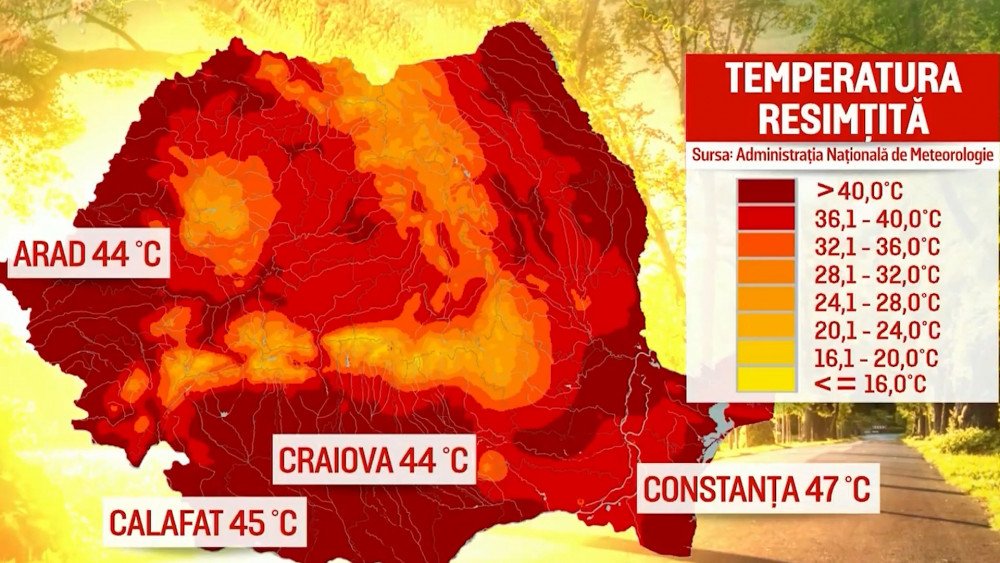
Anomalously high temperatures in Romania
According to the National railway company CFR SA, train speeds were reduced by an average of 20–30 km/h (12-19 mph) across the entire network because rail temperatures exceeded the dangerous mark of 50°C (122°F).
People across the country suffered from the heat in trains: surface temperatures in carriages reached 37°C (99°F), and extreme humidity and crowding only increased the discomfort.
Open windows didn’t help, and some passengers had to travel on the steps with the doors open. Even in trains equipped with air conditioning, the devices couldn’t cope with the anomalous heat.
Low rainfall and drought led to water being supplied on a schedule for only a few hours a day in at least six counties of Romania: Constanta, Alba, Dolj, Iasi, Prahova, and Gorj.
Albania experienced suffocating heat, with air temperatures in the shade reaching 42°C (108°F). The government sought help from the European Union to combat large-scale forest fires. The most challenging situation was in mountainous areas where firefighters couldn’t extinguish the fires due to a lack of specialized equipment.
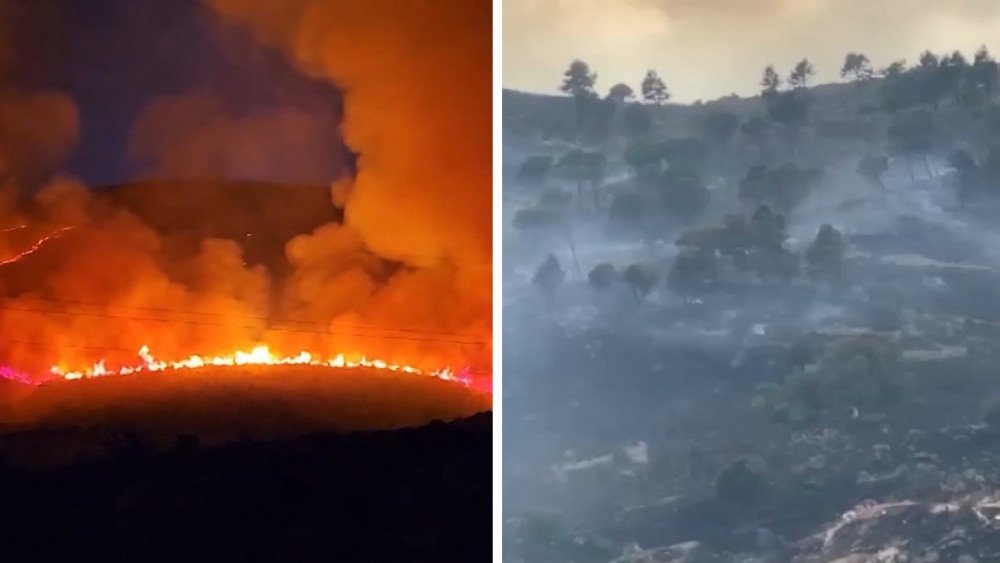
Large-scale forest fires in Albania
The wildfire situation in the country is so dire that penalties for intentional or accidental arson were increased to a 15-year imprisonment.
Southern Russia was gripped by extreme heat. For the first time in history, the summer peak in power consumption exceeded the winter peak. The scorching sun ruins crops, dries out vegetation, and triggers wildfires.
Near the city of Novorossiysk, on July 14, a fire broke out. Due to strong winds, the flames spread rapidly, reaching the Utrish Nature Reserve and the Romantik, Moryak, and Stroitel holiday resorts.
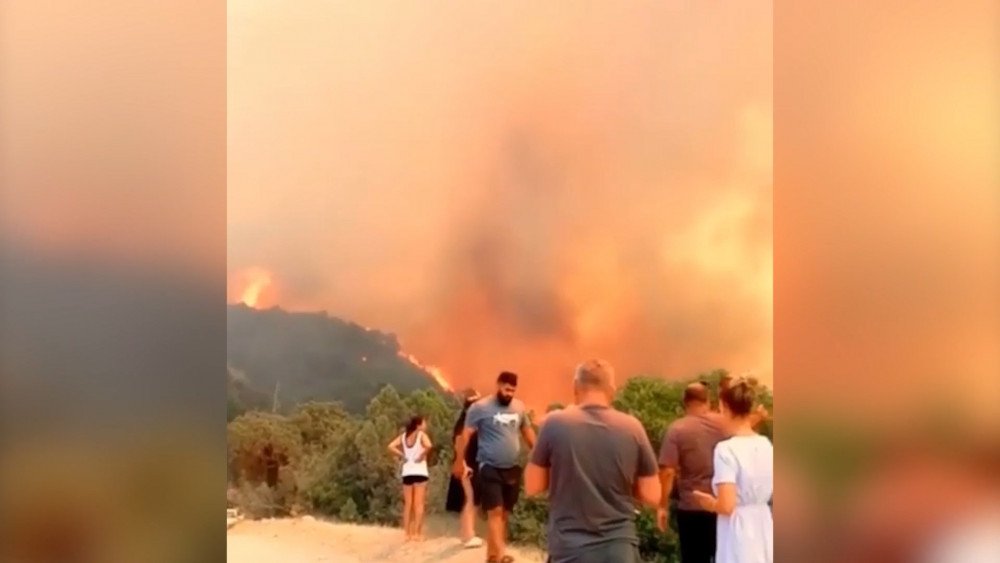
Forest fire near Novorossiysk, Russia
According to the Ministry of Emergency Situations, about 600 people were evacuated. The fire burned 62 hectares (153 acres) of Red Book forest. Significant resources of 3 helicopters, an airplane, 84 units of equipment, and over 300 people were deployed to extinguish the fire.
New daily heat records were set in Kuban on July 16. Thermometers rose above 39°C (102°F). In some localities, the heat broke records for several consecutive days. In the cities of Krasnodar and Armavir, temperatures reached +39°C (102°F), in Anapa +39.2°C (103°F), and in Tuapse +35.7°C (96°F).
In the city of Rostov-on-Don, the heat caused fish to die. A major fish die-off occurred in the Northern Reservoir.

Fish die-off due to heat in Rostov-on-Don, Russia
Farmers are sounding the alarm that there will be almost no vegetables in the next two to three months! Due to the unbearable heat, people are forced to do farm work at night when the temperature slightly drops.
In Bulgaria, as of July 15, more than 200 wildfires were raging due to anomalous heat.
The southern and southeastern parts of Bulgaria were affected the most. In the municipality of Svilengrad, the fire became the strongest in the last decades. Over
40,500 hectares (100,078 acres) of farmland and forests have already been destroyed.
Fires have approached very close to settlements, burning down 13 houses and several cars.
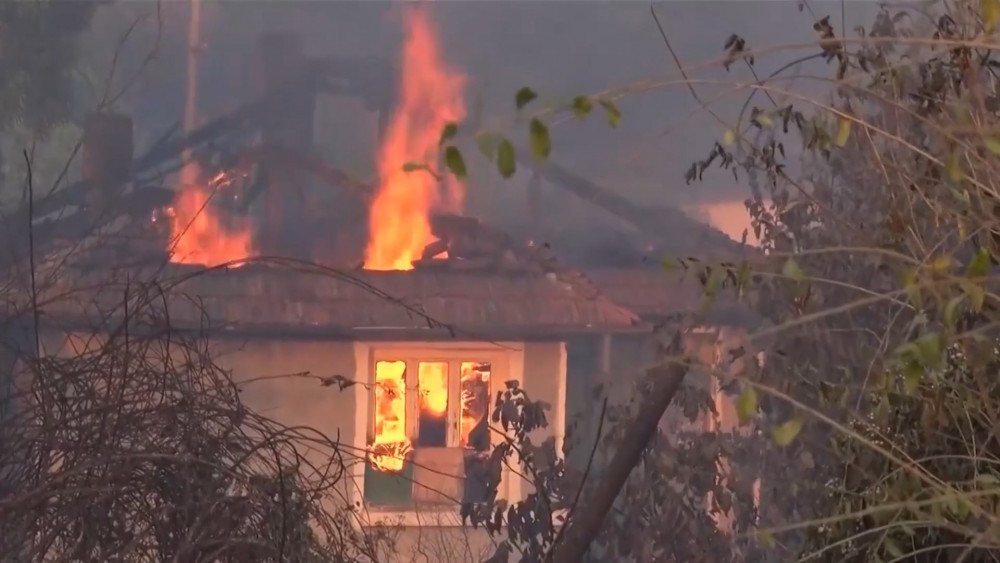
Fire destroying a house in Bulgaria
The situation is extremely severe due to strong winds that are constantly changing direction, contributing to the rapid and chaotic spread of the fire.
In Greece, the anomalous heat wave is aggravated by drought, fires and water shortages. Due to the deformation of the rails caused by high temperatures, train services from the city of Patras to the Peloponnese peninsula have been halted. The repairs will only begin after the temperature drops.
The largest water reservoir on the island of Naxos has dried up.
Seawater is seeping into the dried-up wells of local residents, damaging potato crops.
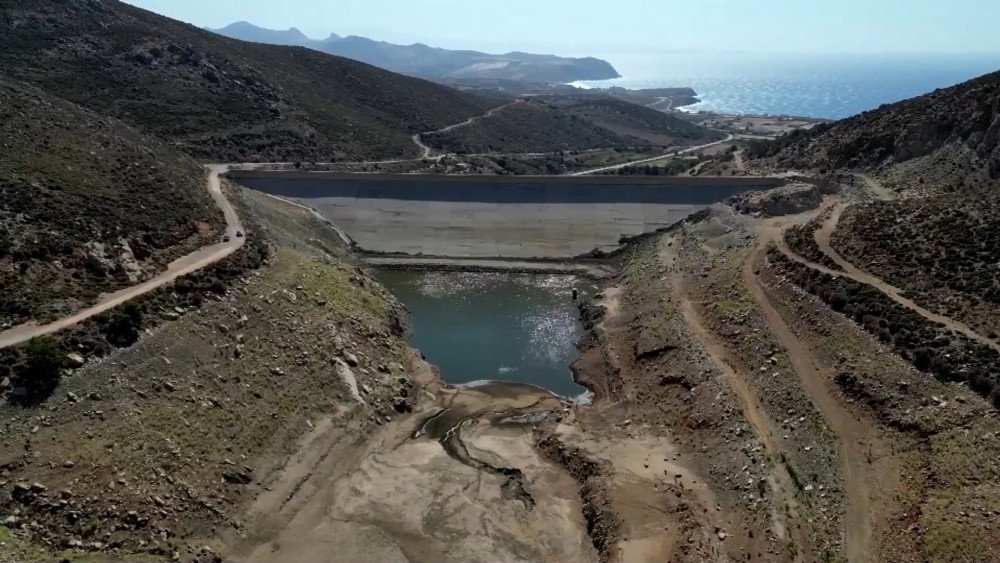
The largest water reservoir on the island of Naxos has dried up, Greece
Due to the water shortage, Karpathos authorities have imposed restrictions on refilling swimming pools, and there are plans to build a desalination plant on the island of Thasos.
We would like to sum up this article with the following message. Heatwaves, storms and other cataclysms destroy infrastructure and lead to a catastrophic power shortage. It often takes days, weeks and even months to recover from the damage. It is obvious that humanity needs energy sources that do not depend on natural disasters.
Such technologies already exist. They will provide people with energy anywhere on the planet, help us survive under the impending climate collapse, and take humanity to a new, higher stage of development. Now we are at the crossroads. And the key question is, what will we choose: chaos, suffering and ultimately death or implementation of new technologies and the development of civilization?
The answer to the question of how to change the situation is in the popular science film Water From Air: The Path to Saving Humanity which you can find on our channel.
The video version of this article is here.
Leave a comment